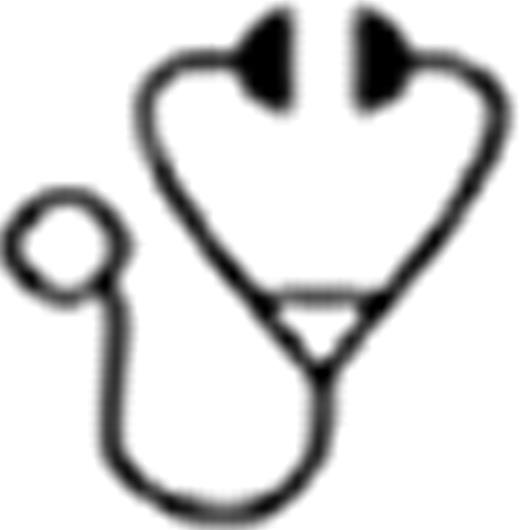Abstract
Randomized trials demonstrated that filgrastim-mobilized PBSC compared to BM from HLA-identical siblings improved engraftment kinetics, increased risks of acute and chronic GVHD, but also decreased relapse and improved survival in patients with high risk leukemia. Retrospective analyses of unrelated donor transplants did not appreciate the same PBSC protective effect.
The BMT CTN, sponsored by the NHLBI and NCI, conducted a Phase III, randomized, multicenter, trial of unrelated donor PBSC versus BM. The primary objective was to compare two-year survival probabilities in the two study arms using an intent-to-treat analysis. Both patients and donors provided informed consent. Fifty centers in the U.S. and Canada enrolled patients between January, 2004 and September 2009. Median follow up is 36 months (interquartile range 25 – 37 months). Randomization was performed in a 1:1 ratio to either PBSC or BM and stratified by transplant center and disease risk. Of the 278 subjects randomized to BM, 5% had no transplant, and 4.3% crossed over to PBSC; of the 273 randomized to PBSC, 4% had no transplant, and 0.4% crossed over to BM, so subjects on both arms had greater than 90% compliance with the assigned therapy. Patient primary disease (AML, ALL, CML, MDS, CMML, and MF), disease risk, gender, age, race, ethnicity, CMV serology, performance status, comorbidity, organ function, conditioning regimen, GVHD prophylaxis, use of growth factors, and donor characteristics were all well balanced between the two groups. Overall, 90% were adults over age 20, 47% had AML, 28% had high risk disease, 48% were conditioned with cyclophosphamide plus total body irradiation, and 71% received tacrolimus plus methotrexate for GVHD prophylaxis.
There were no observed differences in outcomes between the two groups except for a higher incidence of overall chronic GVHD (see Table) and more common chronic extensive GVHD with PBSC (46% vs. 31%). There were no survival differences according to graft sources in planned subset analyses of low and high risk malignancy or in those received HLA-matched or mismatched grafts. Primary causes of death were relapse in 54% vs. 49%, graft failure in 7% vs. 0%, acute or chronic GVHD in 22% vs. 34%, others in 16% vs. 16% of the BM and PBSC arms, respectively.
| Outcomes at 2 years . | PBSC . | BM . | p-value . |
|---|---|---|---|
| Overall survival, intent-to-treat | 51% (45%-57%) | 46% (40%-52%) | 0.25 |
| Overall survival, transplanted | 52% (46%-58%) | 48% (42%-54%) | 0.37 |
| Disease-free survival, transplanted | 47% (40%-53%) | 44% (38%-50%) | 0.60 |
| Relapse | 28% (22%-34%) | 28% (23%-34%) | 0.88 |
| Non-relapse mortality | 26% (20%-31%) | 27% (22%-33%) | 0.67 |
| ANC > 500 by day 28 | 95% (80%-99%) | 86% (78%-92%) | 0.09 |
| Acute GVHD II-IV by day 100 | 47% (40%-53%) | 46% (39%-52%) | 0.87 |
| Acute GVHD III-IV by day 100 | 16% (12%-21%) | 14% (10%-19%) | 0.37 |
| Any chronic GVHD | 53% (45%-60%) | 40% (33%-47%) | 0.02 |
| Outcomes at 2 years . | PBSC . | BM . | p-value . |
|---|---|---|---|
| Overall survival, intent-to-treat | 51% (45%-57%) | 46% (40%-52%) | 0.25 |
| Overall survival, transplanted | 52% (46%-58%) | 48% (42%-54%) | 0.37 |
| Disease-free survival, transplanted | 47% (40%-53%) | 44% (38%-50%) | 0.60 |
| Relapse | 28% (22%-34%) | 28% (23%-34%) | 0.88 |
| Non-relapse mortality | 26% (20%-31%) | 27% (22%-33%) | 0.67 |
| ANC > 500 by day 28 | 95% (80%-99%) | 86% (78%-92%) | 0.09 |
| Acute GVHD II-IV by day 100 | 47% (40%-53%) | 46% (39%-52%) | 0.87 |
| Acute GVHD III-IV by day 100 | 16% (12%-21%) | 14% (10%-19%) | 0.37 |
| Any chronic GVHD | 53% (45%-60%) | 40% (33%-47%) | 0.02 |
This large randomized trial shows that PBSC from unrelated donors is associated with higher rates of chronic GVHD compared to BM, although rates of acute GVHD, relapse, non-relapse mortality and overall survival are similar.
Off Label Use: Cyclophosphamide, busulfan, melphalan, fludarabine, anti-thymocyte globulin, irradiation were used to eradicate malignancy. Tacrolimus, cyclosporine, methotrexate were used for GVHD prophylaxis. Westervelt:Novartis: Speakers Bureau.

This icon denotes a clinically relevant abstract
Author notes
Asterisk with author names denotes non-ASH members.

This feature is available to Subscribers Only
Sign In or Create an Account Close Modal